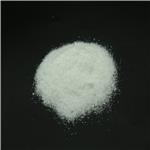- Propham
-

- $0.00 / 1KG
-
2022-10-22
- CAS:122-42-9
- Min. Order: 1KG
- Purity: 99%
- Supply Ability: 20 mt
- Propham
-

- $1.00 / 1KG
-
2019-12-31
- CAS:122-42-9
- Min. Order: 1KG
- Purity: 95-99%
- Supply Ability: 1ton
|
| | Propham Basic information |
| | Propham Chemical Properties |
| | Propham Usage And Synthesis |
| Chemical Properties | White to gray crystalline needles; odorless when pure. Mp 84C (technical grade). Soluble
in alcohol, acetone, isopropyl alcohol; insoluble in
water. | | Chemical Properties | Propham is a colorless crystalline solid. | | Uses | Inhibitor of plant metabolism | | Uses | Preemergence and postemergence herbicide used to control annual grass weeds in
peas, beet crops, lucerne, clover, sugar beet, beans, lettuce, flax, safflowers and lentils. | | Uses | Herbicide, applied as a spray to the soil. | | Definition | ChEBI: Propham is a carbamate ester that is the isopropyl ester of phenylcarbamic acid. It is a selective herbicide used for the control of annual grasses and some broad-leaf weeds and is also a growth regulator for control of sprouting in stored potatoes. It has a role as a herbicide and a plant growth retardant. It is a carbamate ester and a member of benzenes. | | General Description | Colorless crystalline solid. | | Reactivity Profile | Propham is a carbamate ester. Carbamates are chemically similar to, but more reactive than amides. Like amides they form polymers such as polyurethane resins. Carbamates are incompatible with strong acids and bases, and especially incompatible with strong reducing agents such as hydrides. Flammable gaseous hydrogen is produced by the combination of active metals or nitrides with carbamates. Strongly oxidizing acids, peroxides, and hydroperoxides are incompatible with carbamates. | | Hazard | Toxic by ingestion. | | Health Hazard | Moderately toxic herbicide; exhibited low tomoderate toxicity in experimental animalswhen administered by oral, intraperitoneal,intravenous, and subcutaneous routes; skinabsorption is slow; cholinesterase inhibitor;in human ingestion can cause carbamatepoisoning, which can be lethal when takenin large amount; probable lethal oral dosein adult human estimated to be larger thanother carbamate insecticides within the range35–50 g. | | Safety Profile | Poison by
intraperitoneal route. Moderately toxic to
humans by ingestion. Moderately toxic
experimentally by ingestion and possibly
other routes. An experimental teratogen.
Human mutation data reported.
Questionable carcinogen with experimental
neoplastigenic data. An herbicide. When
heated to decomposition it emits toxic
fumes of NO,. See also CARBAMATES. | | Potential Exposure | A potential danger to those involved
in the manufacture, formulation and application of this car-
bamate/organonitrogen grass-control herbicide. | | Environmental Fate | Biological. Rajagopal et al. (1989) reported that Achromobacter sp. and an Arthrobacter sp. utilized propham as a sole carbon source. Metabolites identified were Nphenylcarbamic acid, aniline, catechol, monoisopropyl carbonate, 2-propanol and carbon
dioxide (Rajagopal et al., 1989).
Soil. Readily degraded by soil microorganisms forming aniline and carbon dioxide
(Humburg et al., 1989). The reported half-life in soil is approximately 15 and 5 days at
16 and 29°C, respectively (Hartley and Kidd, 1987).
Groundwater. According to the U.S. EPA (1986) propham has a high potential to leach
to groundwater.
Plant. The major plant metabolite which was identified from soybean plants is isopropyl N-2-hydroxycarbanilate (Hartley and Kidd, 1987; Humburg et al., 1989).
Chemical/Physical. Hydrolysis of propham yields N-phenylcarbamic acid and 2-propanol. The acid is very unstable and is spontaneously decomposed to form aniline and
carbon dioxide (Still and Herrett, 1976). Emits toxic fumes of nitrogen oxides when heated
to decomposition (Sax and Lewis, 1987). | | Shipping | UN3077 Environmentally hazardous substances,
solid, n.o.s., Hazard class: 9; Labels: 9-Miscellaneous haz-
ardous material, Technical Name Required. UN2757
Carbamate pesticides, solid, toxic, Hazard Class: 6.1;
Labels: 6.1-Poisonous materials. | | Incompatibilities | Carbamates are incompatible with reduc-
ing agents, strong acids, oxidizing acids, peroxides, and
bases. Contact with active metals or nitrides cause the
release of flammable, and potentially explosive, hydrogen
gas. May react violently with bromine, ketones.
Incompatible with azo dyes, caustics, ammonia, amines,
boranes, hydrazines, strong | | Waste Disposal | Consult with environmental
regulatory agencies for guidance on acceptable disposal
practices. Generators of waste containing this contaminant
(≥100 kg/mo) must conform with EPA regulations
governing storage, transportation, treatment, and waste
disposal. In accordance with 40CFR165, follow recom-
mendations for the disposal of pesticides and pesticide
containers. Must be disposed properly by following pack-
age label directions or by contacting your local or federal
environmental control agency, or by contacting your
regional EPA office. |
| | Propham Preparation Products And Raw materials |
|